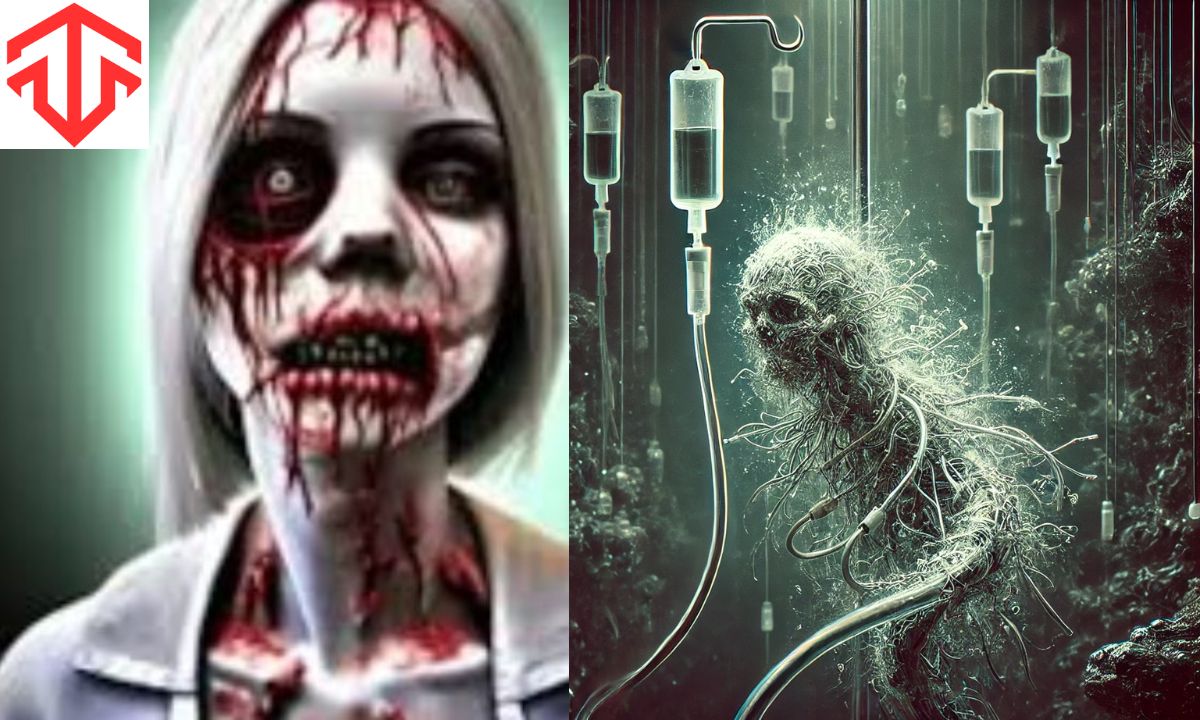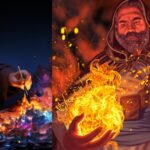AI-generated art has ventured into the realm of horror, creating unsettling imagery that blends uncanny realism with surreal distortions. Among these, the theme of “IV Needles” has emerged as a particularly chilling subject, tapping into common fears of medical procedures and bodily invasion.
In this niche, AI algorithms have produced haunting visuals featuring exaggerated or misplaced intravenous needles, often set in eerie medical environments or fused with human anatomy in disturbing ways. These images push the boundaries of conventional horror art, leveraging the unpredictable nature of AI to create uniquely unsettling compositions.
Why AI Art Horror IV Needles?
In the realm of digital art, a new and unsettling trend has emerged: AI-generated horror imagery featuring IV needles. This unique fusion of technology and terror has captivated audiences and artists alike, pushing the boundaries of what we consider frightening. But why have IV needles become such a prominent motif in AI-generated horror art?
The answer lies in the deep-seated fears and anxieties that medical procedures and equipment often evoke. IV needles, in particular, represent a potent symbol of vulnerability, pain, and invasive medical interventions. When combined with the uncanny and often surreal qualities of AI-generated art, these images tap into our primal fears in ways that traditional horror art may not.
The Power of Medical Imagery in Horror
Medical imagery has long been a staple of horror, from classic literature to modern cinema. The sterile, clinical nature of medical equipment contrasts sharply with the potential for harm and suffering, creating a tension that horror artists have exploited for generations. IV needles, with their ability to penetrate the skin and introduce foreign substances into the body, embody this tension perfectly.
AI’s Unique Perspective on Fear
What sets AI-generated horror apart is its ability to approach these fears from a non-human perspective. Unencumbered by personal experiences or cultural taboos, AI can create images that push beyond conventional boundaries, resulting in truly unsettling and thought-provoking artwork.
AI’s Role in Crafting Nightmarish Imagery
Artificial Intelligence has revolutionized many fields, and art is no exception. In the realm of horror art, AI has proven to be a powerful tool for creating images that are both visually striking and deeply unsettling.
The Algorithmic Approach to Fear
AI systems, particularly those using machine learning and neural networks, can analyze vast amounts of data to identify patterns and elements that humans find frightening. By combining these elements in novel ways, AI can generate images that tap into our deepest fears, often in ways that human artists might not conceive.
Pushing Boundaries with Inhuman Creativity
One of the most intriguing aspects of AI-generated horror art is its ability to transcend human limitations. Without the constraints of personal experience or cultural norms, AI can create truly alien and unsettling imagery that challenges our perceptions of what is frightening.
Exploring AI-Generated Horror Art: The Impact of IV Needles
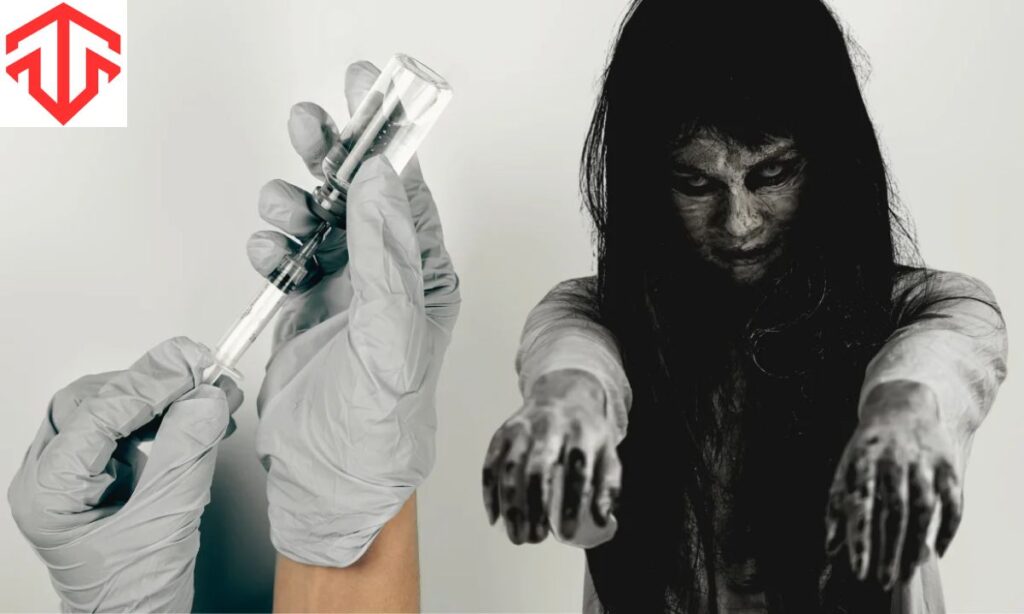
The use of IV needles in AI-generated horror art has produced some of the most chilling and impactful images in this emerging genre. Let’s explore ten examples that showcase the power of this motif:
- “The Vein Whisperer”: An AI-generated image depicting a mass of writhing IV tubes with needles that seem to have a life of their own, reaching out towards the viewer.
- “Sterile Nightmare”: A hospital room where every surface is covered in gleaming, oversized IV needles, creating a claustrophobic and threatening environment.
- “Injection of Fear”: A close-up of a human eye with an IV needle replacing the pupil, blurring the line between the organic and the artificial.
- “The Needle’s Embrace”: A human figure completely entwined in IV tubes and needles, suggesting a loss of autonomy and control.
- “Arterial Maze”: An intricate network of veins and arteries transformed into a labyrinth of IV tubes and needles, creating a sense of being lost within one’s own body.
- “The Last Patient”: An empty hospital bed surrounded by sentient IV stands with needles poised like predators, waiting for their next victim.
- “Needle Rain”: A surreal cityscape where IV needles fall from the sky like rain, turning an everyday scene into a medical nightmare.
- “The Transfusion”: A human silhouette gradually dissolving into a cascade of IV tubes and needles, blurring the boundaries between body and medical equipment.
- “Needle Forest”: A dark, foreboding forest where trees have been replaced by towering IV stands, their needles glinting menacingly in the moonlight.
- “The Injection Dimension”: A portal-like image where reality itself seems to be unraveling into a swirling vortex of IV needles and medical tubing.
These examples demonstrate the diverse and powerful ways in which AI can manipulate the imagery of IV needles to create deeply unsettling art.
AI’s Unexpected Role in Horror Art
The emergence of AI as a tool for creating horror art has taken many by surprise. What was once the domain of human imagination and skill has now been augmented by algorithms capable of generating imagery that can be both beautiful and terrifying.
Breaking New Ground in Visual Horror
AI’s ability to process and recombine vast amounts of visual data allows it to create images that push the boundaries of traditional horror art. By identifying and amplifying elements that trigger fear responses, AI can generate visuals that are uniquely disturbing.
The Collaboration Between Human and Machine
While AI is capable of generating art independently, some of the most compelling pieces come from collaboration between human artists and AI systems. This partnership allows for the combination of human creativity and emotional understanding with AI’s ability to process and generate complex visual elements.
Read This Blog: Samsung MX-HS8500 Reparar No Funciona: 4 Critical Steps To Fix Software Problems
The Haunting Impact of AI in Horror Art
The impact of AI-generated horror art, particularly those featuring IV needles, goes beyond mere shock value. These images often leave a lasting impression on viewers, challenging their perceptions and evoking deep-seated fears.
Psychological Resonance
AI-generated horror art taps into universal fears and anxieties, often in ways that are difficult to articulate. The uncanny nature of these images, where familiar medical equipment is transformed into something alien and threatening, can create a profound sense of unease.
Cultural Reflection
As with all forms of art, AI-generated horror reflects and comments on the society that produces it. The prevalence of medical themes, particularly in the wake of global health crises, speaks to collective anxieties about health, bodily autonomy, and the power of medical institutions.
The Evolution of Horror Art Through the Ages
To fully appreciate the impact of AI-generated horror art, it’s important to consider the historical context of horror in visual art.
From Ancient Myths to Modern Nightmares
Horror has been a part of human artistic expression since ancient times, from depictions of mythological monsters to medieval representations of hell and damnation. As society evolved, so too did the nature of our fears and the art that represents them.
The Influence of Technology on Horror Imagery
The industrial revolution brought new fears of machines and technology, which were reflected in the art of the time. Now, in the digital age, AI-generated art represents the latest evolution in how we visualize and confront our fears.
The Chilling Allure of AI-Enhanced IV Needle Imagery
The specific use of IV needles in AI-generated horror art merits closer examination. These common medical tools have become powerful symbols of fear and vulnerability in the hands of AI artists.
Transforming the Familiar into the Frightening
IV needles are familiar objects to most people, associated with necessary but often unpleasant medical procedures. AI transforms these everyday items into something alien and threatening, playing on our innate discomfort with medical interventions.
The Intersection of Body Horror and Medical Fear
Many AI-generated images featuring IV needles fall into the subgenre of body horror, exploring themes of bodily invasion, transformation, and loss of control. This intersection of medical imagery and body horror creates a particularly potent form of visual fear.
The Evolution of AI in Art
The use of AI in art creation is a relatively recent development, but one that has rapidly evolved and expanded in scope.
From Simple Algorithms to Complex Neural Networks
Early AI art relied on simple algorithms to generate patterns or modify existing images. Modern AI art creation often involves sophisticated neural networks capable of generating entirely original imagery based on vast datasets of existing art and photographs.
The Debate Over AI as an Artistic Tool
The rise of AI in art creation has sparked debates about the nature of creativity and the role of the artist. While some see AI as simply another tool in the artist’s arsenal, others question whether AI-generated images can truly be considered art.
The Unsettling Subtlety of AI-Generated Horror Art
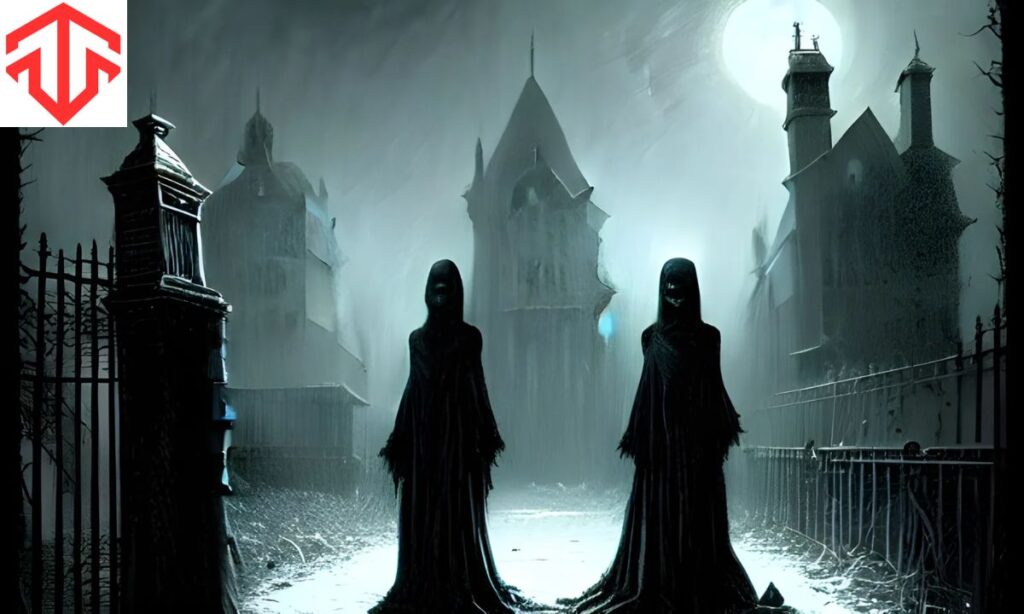
One of the most striking aspects of AI-generated horror art is its ability to create subtle, insidious forms of fear that linger in the viewer’s mind.
Beyond Gore: The Power of Implied Horror
While AI is capable of generating graphic or gory images, some of the most effective AI-generated horror art relies on suggestion and implication. A slightly off-kilter composition or an uncanny juxtaposition can be more unsettling than overt violence.
The Uncanny Valley in Static Images
The concept of the uncanny valley, usually applied to humanoid robots or 3D animations, finds new expression in AI-generated art. Images that are almost, but not quite, realistic can trigger a deep sense of unease in viewers.
Intriguing AI Horror Themes with IV Needles
AI-generated horror art featuring IV needles often explores several recurring themes:
- Body transformation and invasion
- Loss of control and autonomy
- The merging of organic and inorganic elements
- Distortions of scale and proportion
- The personification of medical equipment
These themes reflect deep-seated anxieties about health, bodily integrity, and the power dynamics inherent in medical treatment.
AI Art’s Influence on Modern Culture
The emergence of AI-generated art, including horror art, has had a significant impact on contemporary culture and the art world.
Challenging Traditional Notions of Artistry
AI-generated art has forced us to reconsider what it means to be an artist and what constitutes creativity. This has led to philosophical debates about the nature of art and the role of human intention in artistic creation.
New Avenues for Artistic Expression
AI tools have opened up new possibilities for artists, allowing them to explore ideas and create images that might not have been possible through traditional means. This has led to an explosion of creativity in digital art.
The Unfiltered Edge of AI-Generated Horror
One of the most striking aspects of AI-generated horror art is its ability to produce imagery unfiltered by human sensibilities or social norms.
Raw Fear Without Human Constraints
AI, lacking human emotions or cultural conditioning, can generate images that tap into primal fears without the self-censorship that might limit a human artist. This can result in particularly disturbing or provocative imagery.
The Challenge of Ethical Boundaries
The unfiltered nature of AI-generated art raises questions about ethical boundaries in art creation. How do we balance the pursuit of artistic expression with the potential for harm or offense?
Understanding AI Art and Its Techniques
To fully appreciate AI-generated horror art, it’s helpful to understand the underlying technologies and techniques used in its creation.
What is AI Art?
AI art refers to any artwork created with the assistance of artificial intelligence algorithms. This can range from AI-enhanced digital painting to entirely AI-generated images based on text prompts.
Key Techniques and Algorithms
Some of the key techniques used in AI art creation include:
- Generative Adversarial Networks (GANs)
- Neural Style Transfer
- Deep Dream algorithms
- Text-to-Image models like DALL-E and Midjourney
Each of these techniques offers different possibilities for creating unique and unsettling imagery.
The Persistent Appeal of IV Needles in AI Horror Art
The recurring use of IV needles in AI-generated horror art speaks to the enduring power of this imagery to evoke fear and discomfort.
A Universal Symbol of Vulnerability
IV needles represent a point of vulnerability, a breach in our bodily defenses. This makes them a powerful symbol in horror art, representing invasion, contamination, and loss of control.
The Tension Between Help and Harm
IV needles are fundamentally medical tools designed to help patients, yet they also cause pain and discomfort. This duality makes them complex symbols in horror art, embodying both the potential for healing and the threat of harm.
The Role of IV Needles in AI Art Horror
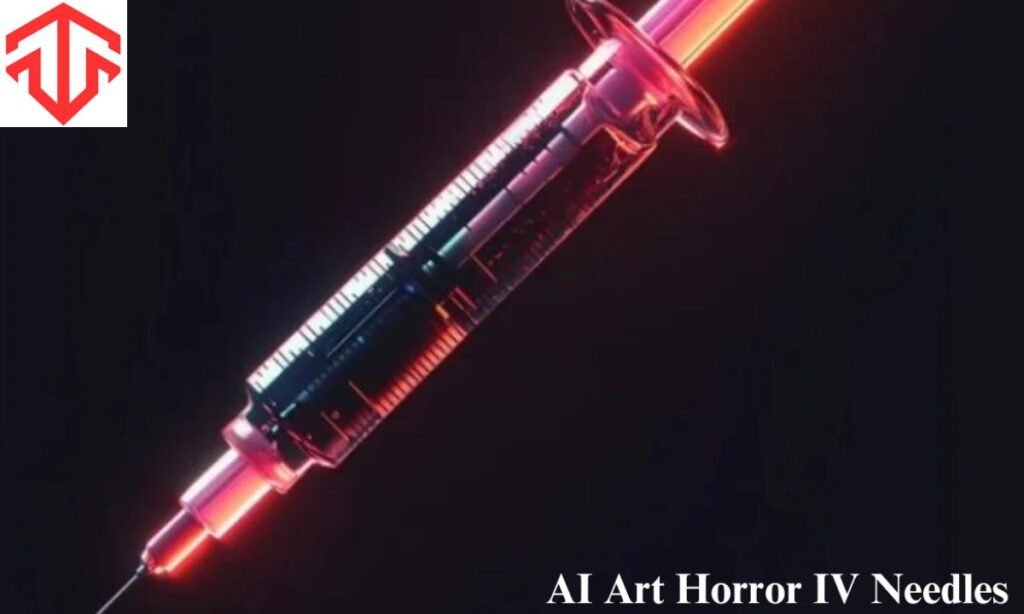
IV needles play a unique and powerful role in AI-generated horror art, serving as a focal point for exploring various themes and fears.
Why IV Needles?
IV needles are effective horror elements for several reasons:
- They represent a common fear (needles and medical procedures)
- They symbolize bodily invasion and loss of control
- They blur the line between helpful medical tool and potential weapon
- Their clinical nature contrasts sharply with visceral fear reactions
Historical Use of IV Needles in Horror Art
While IV needles have appeared in traditional horror art and media, their use has often been limited by the artist’s skill in rendering complex medical equipment. AI’s ability to generate detailed, realistic images of medical devices has expanded the possibilities for using IV needles as central elements in horror compositions.
AI Techniques for Creating Horror Art
Several AI techniques are particularly well-suited for creating horror art, especially pieces featuring IV needles.
Generative Adversarial Networks (GANs)
GANs consist of two neural networks—a generator and a discriminator—that work against each other to create increasingly realistic images. This technique is particularly effective for creating unsettling, dream-like imagery.
Style Transfer
Style transfer algorithms allow the artistic style of one image to be applied to the content of another. This can be used to give medical imagery a nightmarish quality by applying the style of horror artists or unsettling textures.
Text-to-Image Generation
Advanced AI models like DALL-E and Midjourney can generate images based on text descriptions. This allows for the creation of highly specific and imaginative horror scenarios involving IV needles and other medical equipment.
Noteworthy AI Horror Art Projects Featuring IV Needles
Several AI art projects have gained attention for their unsettling use of IV needle imagery:
- “Medicinal Nightmares”: A series of AI-generated images exploring the dark side of medical care.
- “Veins of Fear”: An interactive AI art installation where viewers’ heart rates influence the generation of IV needle-based horror imagery.
- “The Patient’s Perspective”: A collection of AI-generated art based on descriptions of medical fears from real patients.
These projects showcase the diverse ways in which AI can be used to explore and visualize medical anxieties through art.
Psychological Impact of AI Horror Art
The psychological impact of AI-generated horror art, particularly pieces featuring IV needles, can be profound and complex.
Triggering Primal Fears
AI-generated images can tap into deep-seated, primal fears in ways that bypass our rational minds. This can result in visceral reactions of fear or disgust, even when viewers know they’re looking at artificial creations.
Catharsis and Confrontation
For some viewers, engaging with AI-generated horror art can serve as a form of catharsis, allowing them to confront and process their fears in a controlled environment. This can be particularly relevant for individuals with medical anxieties or phobias.
The Uncanny Valley Effect
Many AI-generated images fall into the “uncanny valley“—a phenomenon where almost-but-not-quite-realistic depictions of human features or familiar objects trigger a sense of unease or revulsion. This effect can be particularly pronounced in medical-themed horror art.
Read This Blog: Juarez de Huerta Aurora en el Condado de Los Angeles: 6 Essential Lessons for Future Leaders
Creating AI Art Horror Featuring IV Needles
For artists interested in creating AI-generated horror art featuring IV needles, there are several approaches and considerations to keep in mind.
Choosing the Right AI Tools
Different AI art generation tools have different strengths and weaknesses. Some may be better suited for creating realistic medical equipment, while others excel at generating surreal or distorted imagery.
Crafting Effective Prompts
For text-to-image AI models, crafting the right prompt is crucial. Effective prompts for IV needle horror might include specific descriptions of the needles, the setting, and the emotional tone you want to convey.
Ethical Considerations
When creating potentially disturbing imagery, it’s important to consider the ethical implications. This includes being mindful of potential triggers for viewers with medical trauma and considering how the art might be perceived or used by others.
Comparative Analysis: Traditional vs. AI Horror Art
Comparing AI-generated horror art to traditional horror art reveals both similarities and significant differences.
Similarities
Both AI and traditional horror art aim to evoke fear and unease in viewers. They often explore similar themes and use common symbols and motifs to trigger emotional responses.
Differences
- AI can generate more complex and detailed images more quickly than most human artists.
- AI-generated art often has a distinct “uncanny” quality that’s difficult to replicate by hand.
- Traditional art benefits from the artist’s personal experiences and emotional understanding, which AI lacks.
- AI can produce a wider variety of styles and compositions in a shorter time, allowing for more experimentation.
Complementary Approaches
Many artists are finding ways to combine AI-generated elements with traditional artistic techniques, creating hybrid works that leverage the strengths of both approaches.
Community Engagement and Feedback
The AI art community, including those focused on horror themes, is active and engaged, providing opportunities for feedback, collaboration, and inspiration.
Online Platforms and Communities
Several online platforms and communities cater to AI artists and enthusiasts:
- AI art subreddits
- Discord servers dedicated to specific AI art tools
- Social media groups for AI artists
- Online galleries showcasing AI-generated art
Collaborative Projects
Many AI artists engage in collaborative projects, combining their skills and ideas to create complex, multi-layered works. These collaborations often push the boundaries of what’s possible with AI-generated art.
Feedback and Critique
Getting feedback on AI-generated art can be crucial for improving skills and understanding how viewers perceive the work. Many online communities offer opportunities for constructive critique and discussion.
Educational Resources for Aspiring AI Horror Artists
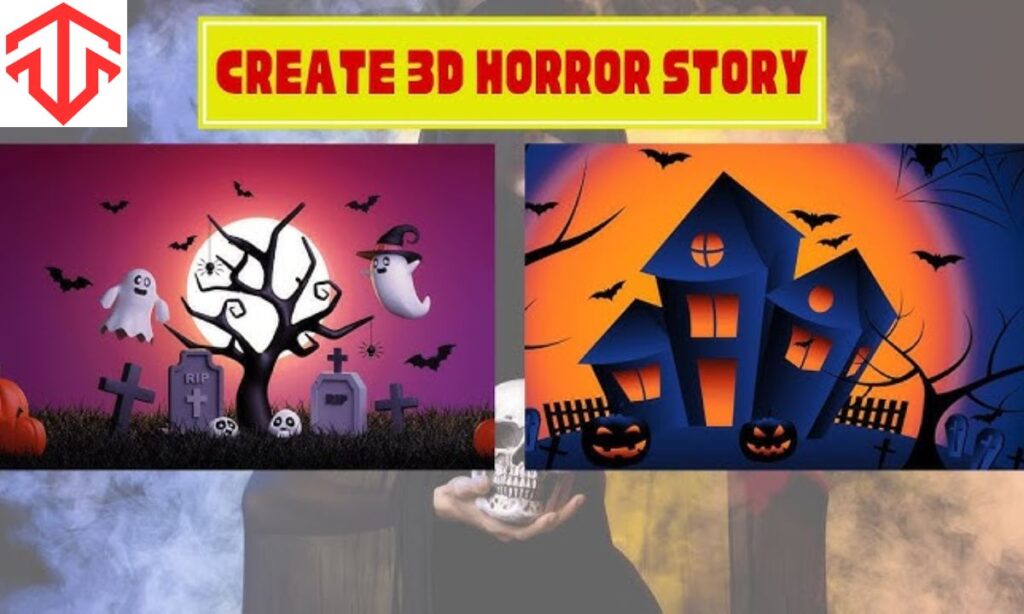
For those interested in creating AI-generated horror art, there are numerous educational resources available.
Online Courses and Tutorials
Many platforms offer courses on AI art creation, including:
- Udemy
- Coursera
- YouTube tutorials
- Artist-run workshops and webinars
Books and Articles
Several books and academic articles explore the technical and artistic aspects of AI art creation, providing deeper insights into the field.
Experimentation and Practice
One of the best ways to learn AI art creation is through hands-on experimentation. Many AI art tools offer free tiers or trial periods, allowing artists to explore and practice without a significant financial investment.
Commercial Aspects of AI Horror Art
As AI-generated art gains popularity, commercial opportunities for artists working in this medium are expanding.
Art Sales and Commissions
Some AI artists have found success selling their work as digital art or prints. Commissions for custom AI-generated horror art are also becoming more common.
Stock Art and Licensing
There’s a growing market for AI-generated stock images, including those with horror themes. Artists can license their AI-generated works for use in various media.
Ethical and Legal Considerations
The commercial use of AI-generated art raises some ethical and legal questions, particularly around copyright and ownership. Artists should be aware of the terms of service for the AI tools they use and consider how they want to license their work.
Future Trends in AI Horror Art
The field of AI-generated art, including horror art, is rapidly evolving. Several trends are likely to shape its future:
Increased Realism and Detail
As AI models become more sophisticated, we can expect to see even more realistic and detailed horror imagery, potentially blurring the line between AI-generated and traditional art.
Interactive and Immersive Experiences
The integration of AI art with virtual and augmented reality technologies could lead to new forms of immersive horror experiences.
Personalized Horror
AI could be used to generate personalized horror art based on an individual’s specific fears or medical history, creating uniquely terrifying experiences.
Ethical AI Art Creation
As discussions around the ethics of AI art continue, we may see the development of guidelines or best practices for creating and sharing potentially disturbing AI-generated imagery.
Frequently Asked Questions
How is AI-generated horror art created?
AI-generated horror art is typically created using machine learning models trained on large datasets of images. These models can generate new images based on text prompts or by combining elements from existing images in novel ways.
Can AI truly understand fear?
AI doesn’t understand fear in the way humans do, but it can identify and replicate visual elements that humans associate with fear based on its training data.
Is AI-generated art really art?
This is a subject of ongoing debate. Many consider AI-generated images to be art, while others argue that true art requires human intention and emotion.
Are there ethical concerns with AI horror art?
Yes, there are concerns about the potential for AI to generate extremely disturbing or triggering imagery, as well as issues around copyright and the displacement of human artists.
How can I get started with creating AI horror art?
You can start by experimenting with publicly available AI art tools like DALL-E or Midjourney, and by studying both traditional horror art and AI art techniques.
Conclusion
AI-generated horror art, particularly that featuring IV needles, represents a fascinating intersection of technology, psychology, and artistic expression. By tapping into deep-seated fears and anxieties about medical procedures and bodily invasion, these images create a uniquely unsettling form of visual art.
The ability of AI to generate complex, detailed, and often surreal imagery has opened up new possibilities for exploring the nature of fear and pushing the boundaries of horror art. At the same time, it raises important questions about the nature of creativity, the role of the artist, and the ethical considerations involved in creating potentially disturbing content.

Fatima is an experienced content writer and digital marketer, skilled in creating SEO-friendly content that resonates with audiences. She helps brands enhance their online presence through targeted campaigns, with expertise in blog writing, social media management, email marketing, and SEO optimization.

